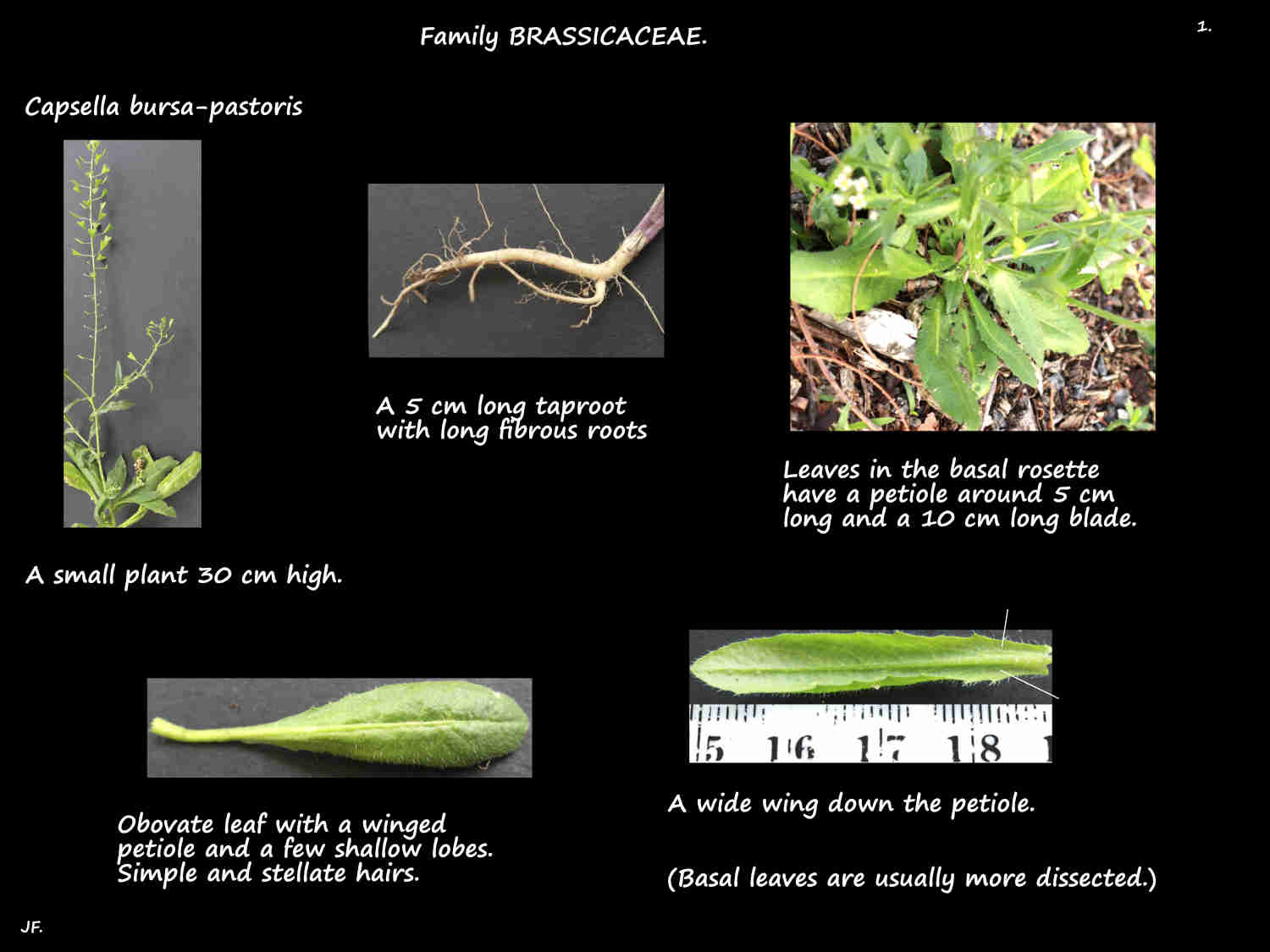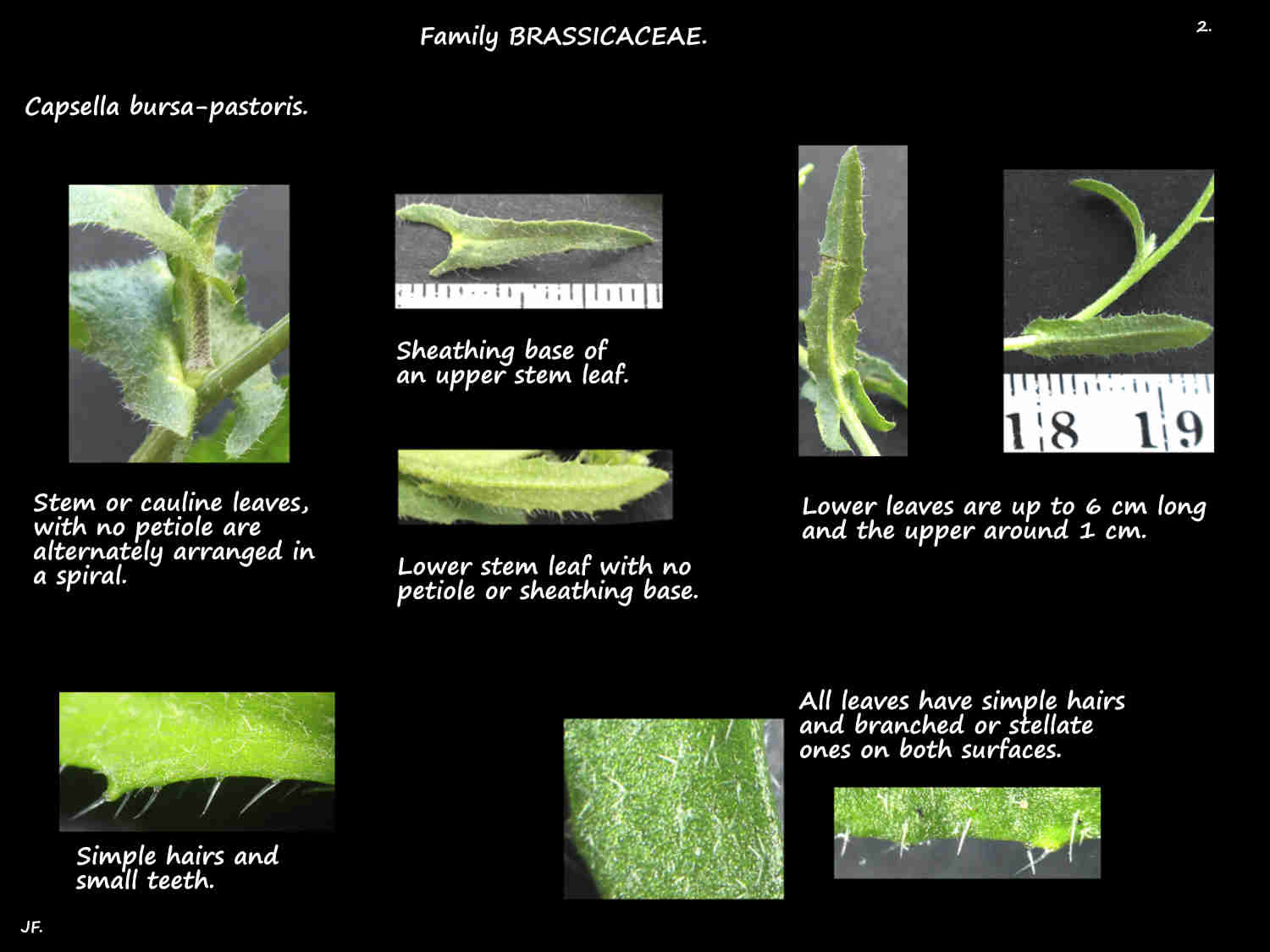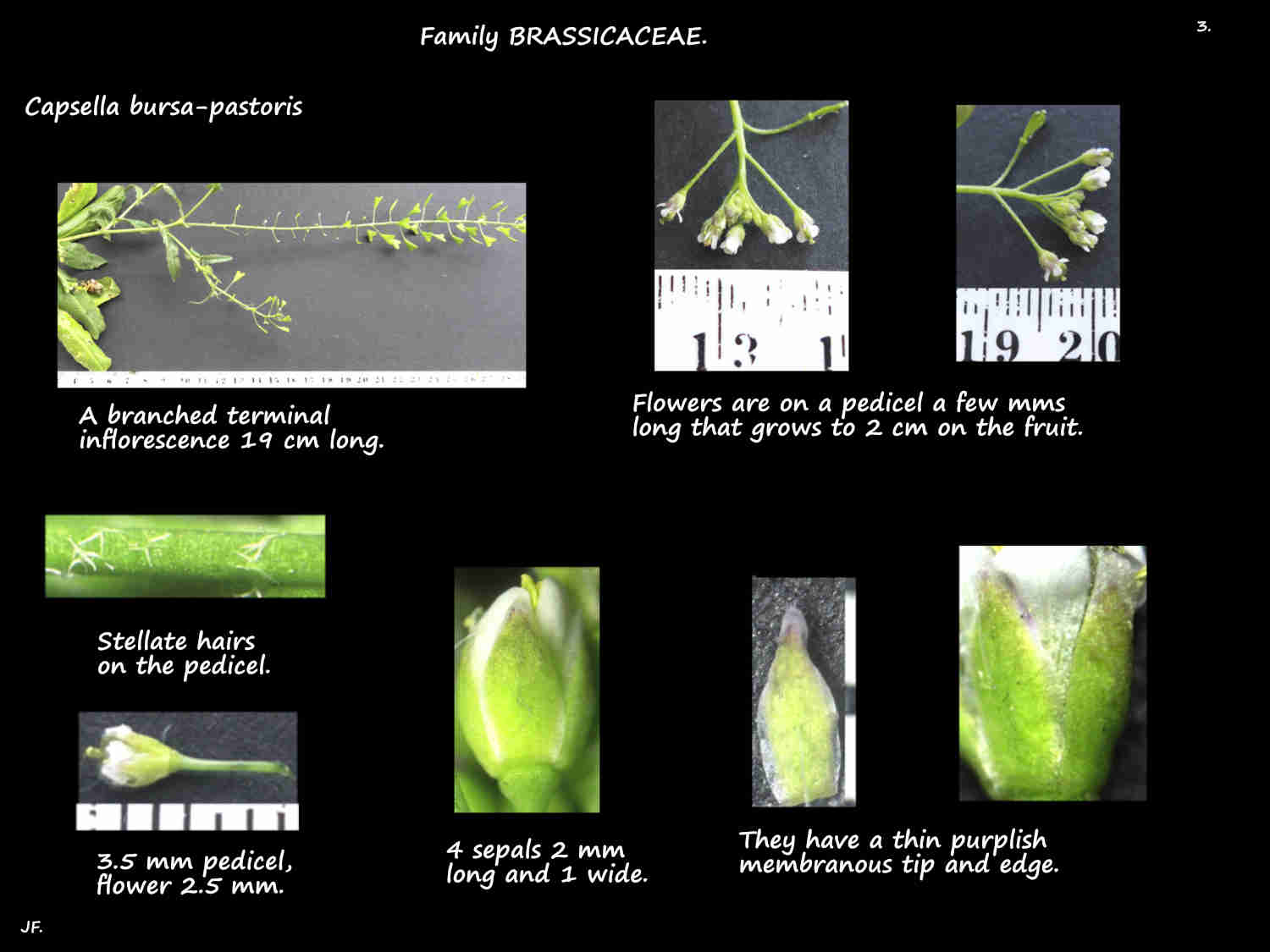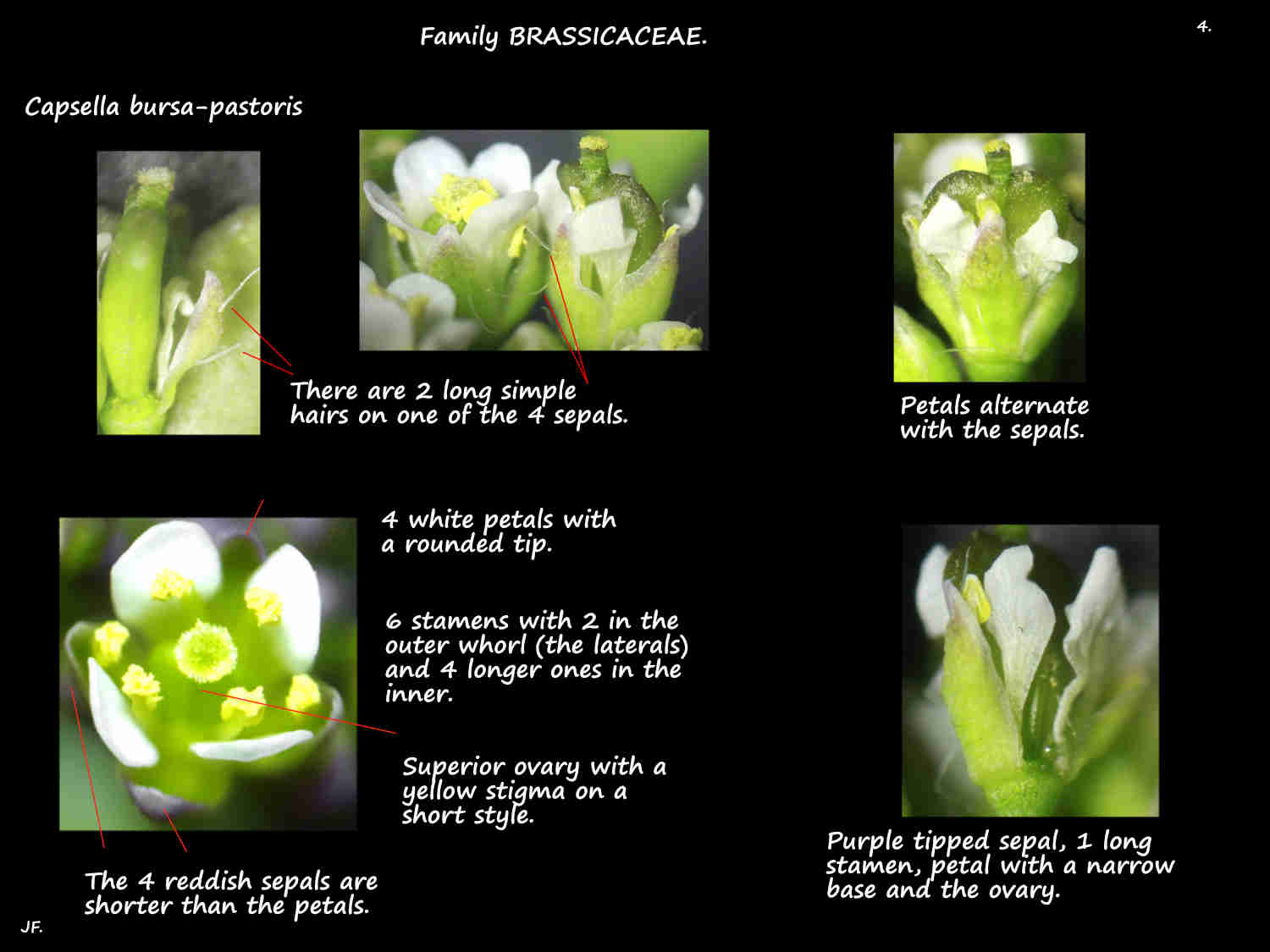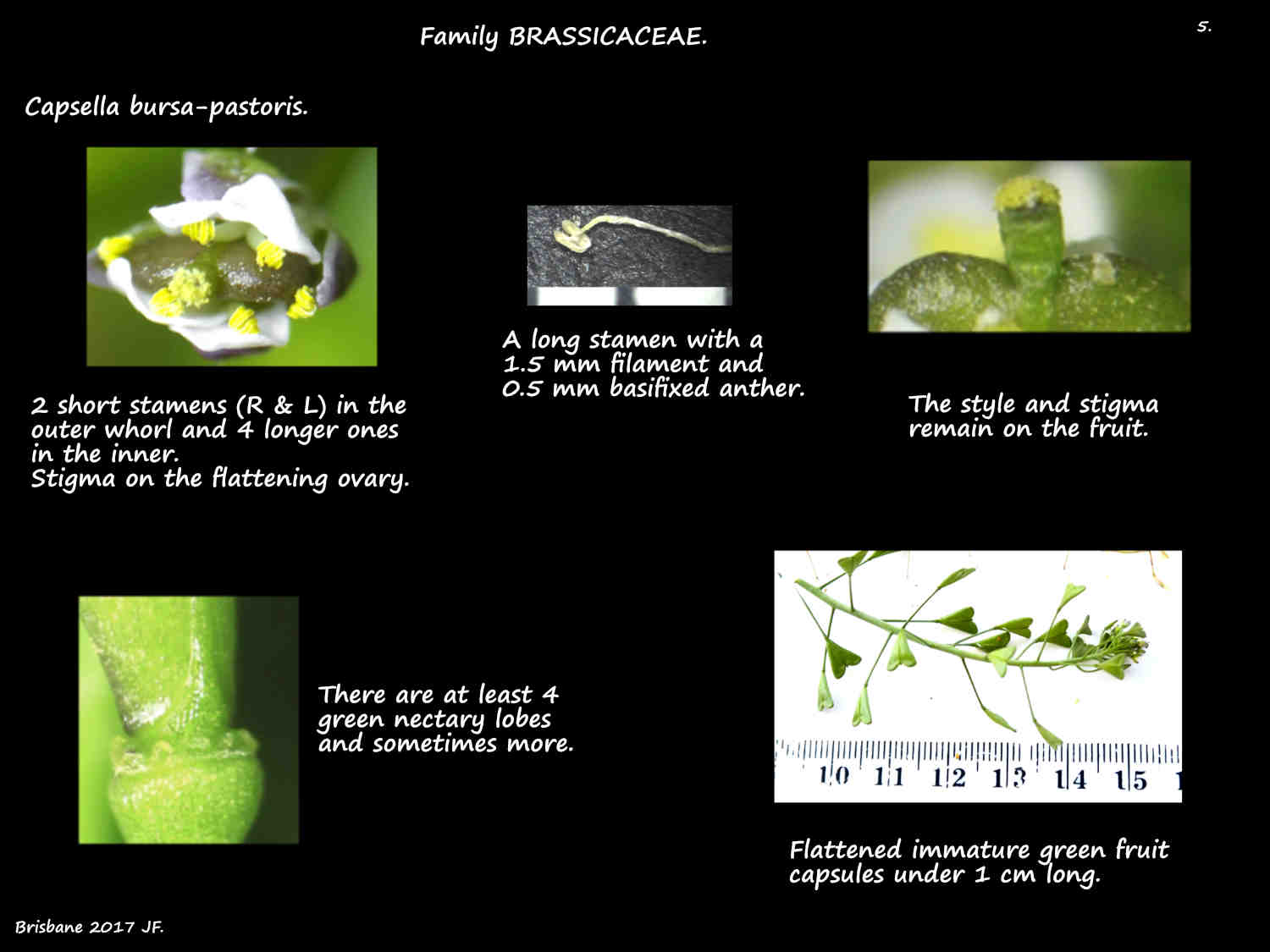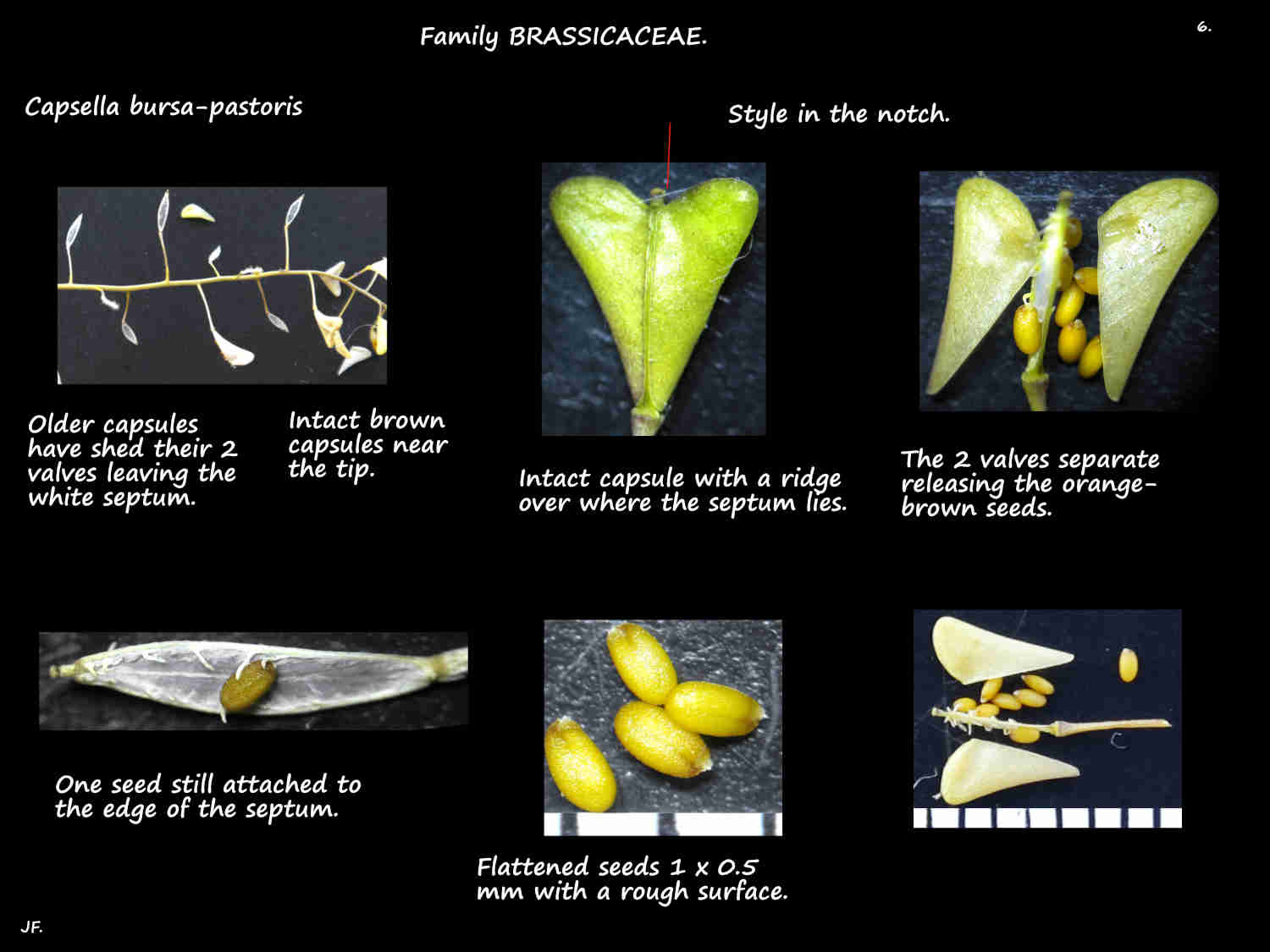Capsella bursa-pastoris.
Shepherd’s Purse is naturalised and a widespread weed in S. E. Queensland.
They are annual or biennial herbs up to 50 or 60 (70) cm high.
There are 1 to a few branched or unbranched stems growing from the thick taproot.
Stems have simple and stellate hairs mainly near the base.
Leaves are in 2 very different sections – basal leaves in a rosette and cauline leaves along the stem.
The basal leaves are on a petiole 2 to 4 (6) cm long.
It may be up to 1 cm wide with wings that merge into the blade.
The typically oblanceolate blades are up to 10 (15) cm long and 3 to 4 cm wide.
They may be undivided but usually have irregularly shaped lobes that extend up to half way to the midrib (pinnatisect).
The ovate terminal lobe, up to 2.5 cm long is usually the largest.
Lobe edges can be smooth, shallowly lobed or have teeth that may have a spine at the tip.
There may be no hairs on the petiole and blades or simple or branched ones.
The stem leaves are alternately arranged in a spiral.
They have no petiole and their bases (mainly on the upper leaves) may sheath the stem.
Lower stem leaves are up to around 6 cm long and 2 cm wide while those at the tip are around 1 cm long and a few mms wide.
The blade shape is variable being linear to a narrow lance-shape and entire or lobed.
The commonly branched terminal inflorescences have a peduncle 25 to 30 cm long with or without stellate hairs.
This may have a single spike of flowers but there are usually many branches (a panicle).
Each branch is a raceme (flowers, on pedicels with the lowest opening first so the branch continues to lengthen).
Branches can be over 30 cm long with a small cluster of flowers at the tip.
The flower stalks (pedicels), initially around 4 mm long have a few stellate hairs. They lengthen as the fruit matures.
The small flowers are around 3 mm across.
There are 4 ovate to oblong sepals around 2 mm long and under 1 mm wide.
They are green with a reddish-purple edge and tip.
The 4 spreading white petals have a short clawed base and 1 or more nectaries.
Obovate or spoon-shaped, they are up to around 3 mm long.
There are 6 free stamens with 2 in the outer whorl and 4 longer ones in the inner.
The outer filaments are around 1.3 mm long and the inner around 1.6 mm.
The 0.4 mm long yellow anthers open through longitudinal slits.
There are 4 green nectary lobes with 1 on each side of the 2 outer stamen filaments.
There may also be more small lobes on the receptacle.
The superior ovary, of 2 fused carpels is around 1.3 mm high and is divided into 2 chambers by a false septum.
Each chamber has up to 20 ovules in 2 rows with parietal placentation.
The style, around 0.3 mm long has a stigma with papillae.
The initially roughly spherical ovary becomes flattened and heart-shaped as the seeds develop.
The style and stigma remain in the apical notch.
The fruit are a flattened septifragal capsule in which the 2 carpel walls (valves) fall off leaving the thin septum between them intact.
The green then brown capsules, up to around 1 cm long and wide are an inverted triangle or obcordate in shape.
(They are often called a silicle as they are less than 3 times long as wide.)
The brownish flattened seeds, around 1 mm long and 0.5 m wide have a network of ridges on the surface and no wings.
J.F.
